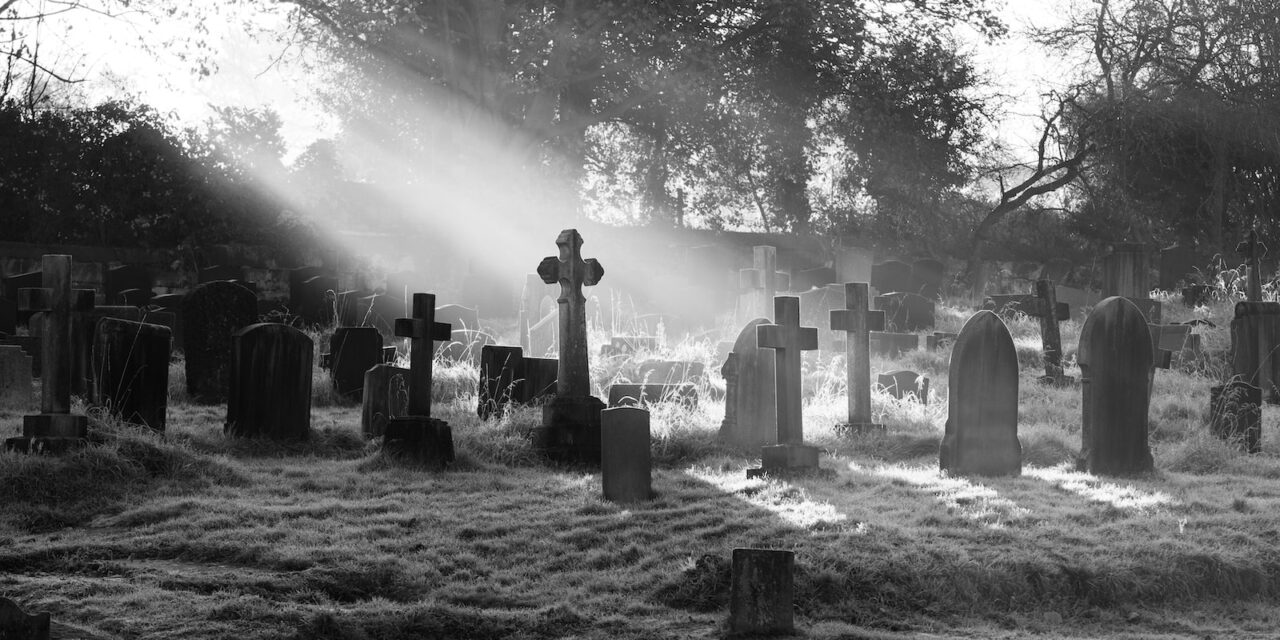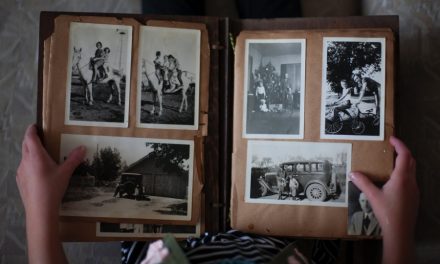Cemeteries hold a profound significance in our understanding of ancestry and the lives of our forebears. They serve as silent witnesses, etched with the stories and legacies of generations past. Exploring your ancestry through cemetery research offers a unique opportunity to delve into the rich tapestry of your family history, unveiling a deeper connection to your roots.
By carefully examining tombstones, deciphering inscriptions, and navigating burial records, you can uncover valuable clues that bridge the gap between the present and the past. This article aims to guide you on a journey of discovery, providing insights into the significance of cemetery research and equipping you with the tools and knowledge to unlock the ancestral secrets hidden within these hallowed grounds.
Table of Contents
Understanding Cemetery Records: Ancestral Clues in Tombstones
Among the most tangible and enduring artefacts found within cemeteries are tombstones, which serve as poignant markers of the past. These stone memorials often bear more than just names and dates; they hold key insights into family connections, religious affiliations, and personal attributes.
When delving into cemetery research, understanding the significance of tombstone inscriptions is vital. Epitaphs, birth and death dates, familial relationships, and even symbols and icons engraved on these weathered stones all provide invaluable clues for tracing your lineage. Names can reveal generations of familial ties, while birth and death dates offer glimpses into life spans and the proximity of relatives. Additional details like marriage dates, military service notations, or occupation mentions further flesh out the intricate tapestry of your family’s history.
Moreover, tombstone iconography and religious symbols can offer glimpses into your ancestors’ beliefs and cultural heritage. From crosses denoting Christian faith to Star of David symbols representing Jewish ancestry, these visual cues provide a deeper understanding of your family’s religious and cultural background.
As you embark on your journey of cemetery research, learning to decipher and interpret tombstone inscriptions becomes a vital skill. It allows you to piece together the puzzle of your ancestry, connecting the dots between generations and unearthing stories that have long been whispered by the wind. By recognising the significance of cemetery records, particularly the clues embedded within tombstones, you can unlock a wealth of knowledge about your family’s past and forge a stronger connection to your roots.
Locating and Accessing Cemetery Records: Tools and Resources
Locating and accessing cemetery records is a crucial step in your journey of exploring ancestral heritage. Fortunately, a plethora of tools and resources are available to assist you in this endeavour, making the process more accessible than ever before.
One of the first steps is to determine the specific cemeteries where your ancestors may have been laid to rest. Family documents, oral history, and genealogical research can provide valuable leads in identifying potential burial sites. Once you have identified the cemeteries of interest, you can turn to various online databases and archives specifically dedicated to cemetery records.
Numerous websites offer comprehensive databases that compile burial records from a wide range of cemeteries. These databases often allow you to search for specific individuals by name, location, or other relevant criteria. Some platforms even provide digital maps and plot information, enabling you to pinpoint the exact locations of graves within a cemetery.
In addition to online resources, local historical societies, genealogical societies, and public libraries can be invaluable in your quest for cemetery records. They may house physical records, maps, or indexes that are not available online. These institutions often provide research assistance and can guide you toward lesser-known burial grounds or provide insights into local burial customs and traditions.
It’s worth noting that cemetery records may vary in their comprehensiveness and accessibility, as they are often influenced by factors such as the age of the cemetery, record-keeping practices, and preservation efforts. However, by employing a combination of online tools and local resources, you can maximize your chances of unearthing valuable information about your ancestors.
As you embark on your exploration of cemetery records, be prepared for the thrill of discovery and the occasional challenge of navigating fragmented or incomplete records. Patience and persistence are key virtues in this pursuit, but the rewards can be immeasurable.
Analysing Tombstone Inscriptions: Unravelling Ancestral Information
Tombstone inscriptions hold a wealth of ancestral information waiting to be discovered and interpreted. These carefully engraved words and symbols serve as windows into the lives and identities of our ancestors, offering glimpses into their personalities, relationships, and even their aspirations.
When analysing tombstone inscriptions, start with the basics. Take note of the names, birth dates, and death dates etched onto the stone. These fundamental details provide essential anchors for your research, allowing you to establish timelines and connections between family members.
Beyond the basics, pay attention to the epitaphs or dedicatory statements inscribed on the tombstone. These poetic or heartfelt lines often encapsulate the essence of the person memorialised. Epitaphs can offer insights into their character, values, or accomplishments, providing a more intimate glimpse into their lives.
Symbols and icons carved onto tombstones also hold significance. Religious symbols, such as crosses, Stars of David, or crescents, reveal the spiritual beliefs of the deceased and their religious affiliations. Fraternal or organisational emblems might indicate memberships in specific groups or societies. These symbols can provide valuable context for understanding your ancestors’ social and cultural connections.
In addition to names, dates, epitaphs, and symbols, tombstones can sometimes bear additional information, such as military service notations, occupation descriptions, or even details about family relationships. These details can help you piece together a more comprehensive narrative of your ancestors’ lives, shedding light on their experiences, accomplishments, and familial connections.
As you analyse tombstone inscriptions, it is essential to cross-reference and corroborates the information you find with other sources. Cemetery records, census data, birth and marriage certificates, and other genealogical documents can help validate and expand upon the information gleaned from tombstones.
By carefully scrutinising tombstone inscriptions and examining them in the broader context of your genealogical research, you can unravel ancestral stories that may have otherwise remained hidden. Each letter, each word, and each symbol etched into the stone is a testament to the lives and legacies of those who came before us, allowing us to honour their memory and forge a deeper connection to our own identity.
Mapping Cemetery Plots: Discovering Family Connections
Mapping cemetery plots is a valuable endeavour that can provide a visual representation of family connections and unearth hidden relationships among your ancestors. By systematically recording the location and layout of graves within a cemetery, you can create a spatial record that goes beyond names and dates, offering insights into familial bonds and connections.
To begin mapping cemetery plots, it’s helpful to obtain a layout or map of the cemetery if one is available. This can be obtained from cemetery administrators, historical societies, or online resources. Familiarise yourself with the layout, sections, and divisions within the cemetery to ensure accurate plotting.
Equipped with the map, visit the cemetery and take careful notes as you locate each grave. Note the names, dates, and any other pertinent information on each tombstone. Use a notepad, digital device, or a specialised cemetery mapping tool to record the details of each grave as you move through the cemetery.
As you document the graves, pay attention to the spatial relationships between them. Note the proximity of graves to one another, which can provide clues about family connections. Look for clusters of graves bearing the same surname or graves with shared family names, indicating potential relationships or ancestral ties.
In addition to recording grave locations, consider capturing photographs of tombstones and their surroundings. These visual records can serve as a reference for future analysis and provide a more comprehensive view of the cemetery as a whole.
Once you have gathered the data, it’s time to translate it into a visual representation. This can be done using specialised cemetery mapping software or by creating a hand-drawn map. Plot each grave on the map, using symbols or colour-coding to indicate relationships such as spouses, children, or extended family members.
A completed cemetery plot map can reveal patterns, connections, and even gaps in your knowledge of family history. It can help identify family plots or clusters, uncover previously unknown relationships, and prompt further investigation into missing or unmarked graves.
By mapping cemetery plots, you gain a unique perspective on your ancestral heritage, connecting names and dates to physical locations within the cemetery. This spatial understanding adds depth and dimension to your research, fostering a more intimate appreciation of your family’s history and the interconnectedness of generations past.
Exploring Burial Customs and Traditions: Cultural Insights into Ancestry
Burial customs and traditions are windows into the rich tapestry of cultural heritage, offering profound insights into the lives and beliefs of our ancestors. Exploring these practices as part of cemetery research can provide a deeper understanding of your family’s cultural background and illuminate the stories that shaped their lives.
Every culture and community has unique burial customs and rituals that reflect their values, religious beliefs, and societal norms. By delving into these practices, you can uncover a wealth of information about your ancestors’ way of life and the traditions they held dear.
For example, burial styles can vary significantly across different cultures and time periods. Some communities practice in-ground burials, while others have distinct above-ground structures such as mausoleums or crypts. Understanding the prevalent burial style in a particular region and era can shed light on the social and economic status of your ancestors.
Religious customs also play a significant role in burial traditions. Christian, Jewish, Islamic, Buddhist, and other religious communities each have their own unique rituals and symbols associated with death and burial. These practices may include specific prayers, the placement of religious objects, or the observance of certain ceremonies. Exploring the religious customs of your ancestors can deepen your understanding of their faith and provide cultural context for their lives.
In addition to religious customs, cultural traditions surrounding mourning, memorialisation, and commemoration can reveal fascinating details about your ancestors. Practices such as wakes, funeral processions, memorial services, or annual remembrance rituals often reflect the values and traditions of a particular community.
Studying burial customs and traditions requires a multidisciplinary approach. Historical documents, local records, ethnographic studies, and anthropological research can all contribute to your exploration of these cultural practices. Engaging with experts in cultural heritage or consulting with local historians can provide valuable insights and context for understanding the customs specific to your ancestors’ time and place.
Connecting with Living Relatives: Networking and Collaboration
Exploring your ancestry through cemetery research not only uncovers the stories of those who came before you but also presents an opportunity to connect with living relatives who share a common heritage. Networking and collaboration with distant family members can enhance your understanding of your ancestry, provide valuable insights, and foster a sense of community.
As you delve into cemetery research, reach out to relatives who may have knowledge or family records that can complement your findings. This can include older family members, distant cousins, or those who have previously conducted genealogical research. Sharing your discoveries and exchanging information can lead to a deeper understanding of your family’s history and potentially uncover new branches of the family tree.
Utilize online genealogy forums, social media groups, and dedicated family history websites to connect with individuals who may share your ancestry. These platforms offer opportunities to exchange information, seek guidance, and collaborate with fellow researchers who may have complementary knowledge or access to unique resources.
Consider attending family reunions, genealogy conferences, or local historical society meetings. These events provide opportunities to meet distant relatives, learn from experienced researchers, and forge connections with individuals who may hold valuable insights or possess family records that can contribute to your research.
Collaboration with living relatives not only broadens your perspective but can also lead to the discovery of family heirlooms, letters, photographs, or other personal artefacts that offer tangible connections to your ancestors. Sharing and preserving these treasures can strengthen family bonds and ensure the preservation of your shared heritage for future generations.
Remember to approach networking and collaboration with respect, gratitude, and a willingness to reciprocate. Sharing your own findings, assisting others in their research, and acknowledging the contributions of fellow researchers cultivate a supportive and mutually beneficial community.
By connecting with living relatives and collaborating with fellow researchers, you expand the horizons of your ancestry exploration. Together, you can piece together a more complete picture of your family’s history, celebrate shared connections, and honour the collective legacy that binds you together.
Preserving Ancestral History: Documenting and Sharing Cemetery Research Findings
Preserving the findings of your cemetery research is essential to ensure that the rich tapestry of your ancestral history endures for future generations. Documenting and sharing your discoveries not only safeguards your research but also enables others to connect with their roots and contribute to the collective knowledge of your family’s heritage.
One of the primary ways to preserve your findings is through comprehensive documentation. Organise your research notes, cemetery records, photographs, maps, and any other relevant materials in a systematic manner. Create digital or physical folders, using clear labelling and organisation to facilitate easy access and retrieval of information. Maintain a detailed log of sources, citations, and any other relevant data to support the accuracy and integrity of your research.
Consider creating a digital repository or website dedicated to your family’s cemetery research. This platform can serve as a central hub to store and share your findings with family members, fellow researchers, and future generations. Include detailed narratives, annotated photographs, maps, and any additional contextual information that can bring your ancestors’ stories to life.
Sharing your research with family members and interested individuals is crucial for preserving and expanding your ancestral history. Organise family gatherings or virtual reunions where you can present your findings, share stories, and encourage dialogue among relatives. This fosters a sense of shared heritage, strengthens family bonds, and ensures that the knowledge of your ancestors is passed down through the generations.
Collaborate with local historical societies, genealogical organisations, or online platforms dedicated to cemetery research. Share your research findings, insights, and any unique discoveries you have made. By contributing to these larger repositories of knowledge, you contribute to the collective understanding of cemetery research and help others in their own explorations.
Consider publishing articles or books about your cemetery research. This allows your findings to reach a wider audience and ensures their long-term preservation. Additionally, consider donating copies of your work to local libraries, archives, or genealogical societies to make your research accessible to others and contribute to the broader historical record.
Preserving ancestral history goes beyond the documentation of facts and dates—it involves passing down the stories, traditions, and cultural heritage that make your family unique. By taking the initiative to document and share your cemetery research, you safeguard the legacy of your ancestors and inspire future generations to cherish their roots, fostering a sense of identity and connection to the past.




